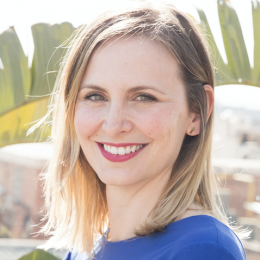A conversation with Ravi Pittie, Founder & CEO of KPay Innovation
How long have you been working in the solar industry, Ravi?
I’ve spent my whole working life in the solar space. I think that gives me a good perspective on how it has evolved from heating through government-funded streetlights and lamps that were not economically viable. In the last 10 years, through rooftop solar, there has been a great evolution and I would say the industry has been commercially viable approximately since 2014.
Initially, I tried to sell off-grid solar in India because I identified a gap and a demand, but I realized it was unaffordable. However, there was a microfinance infrastructure in rural areas, with the financing mechanisms in place. I decided to create a tech solution and bring it to off-grid products.
At a conference, I heard about PAYGo. Most companies were Western and didn’t fully understand the tech challenges of rural settings in low-income countries, like the need to be able to work without a smartphone or a wifi network.
Was that when you created KPay Innovation?
Yes, in 2018. KPay is a tech platform, hardware agnostic, that can work for any power device. Our first implementation was for a Chinese solar manufacturer working in African markets. Since it’s pure tech, it’s a lean business, a low-cost business model. We started working with other Chinese appliances in 2019 right before COVID.
Which markets do you work in?
Initially, we worked with Chinese companies in the African markets, but with COVID travel bans came challenges keeping our relationships with clients from afar, so we pivoted to Indian companies.
In India, PAYGo is not as well-known as in African markets because there are other sturdy financing mechanisms. However, PAYGo is slowly catching on in India too.
How do microfinance and PAYGo work together?
In microfinance models, they spend about 10-12% to recover loans. In the PAYGo model, customers leave a deposit, which is sizeable for them. If they cannot pay for the product, it is in their interest to return the device so they can get their deposit back. However, in absolute numbers there is still traction missing, it’s not mainstream yet and there is a lot of education to be done.
What applications does KPay have?
With tweaks, the KPay model can be applicable to other industries. It allows for hardware and software integration. One such example is access to public toilets. Beyond regulating access and greatly facilitating and simplifying money collection, it also provides data of usage, time spent, schedules, type of user…
It is already being used for renting electrical vehicles with a charging infrastructure, mainly 2 and 3 wheelers. It enables digital payment, for example at metro stations’ exit, and it includes GPS tracking and Geo fencing so if the user goes beyond the time or the area they have paid for, the vehicle will slow down to a halt.
Another application is for collective water dispensers. In Africa, it’s common to have one common unit per village. Each villager can have a QR code or unique number that they punch in, the money is debited and the amount of water they have bought is dispensed.
What do you think has been your impact in the energy access space?
I see KPay as an energy access catalyst, bridging the entire ecosystem to make it viable. Solar products, cookstoves, appliances, water dispensers… low-income groups have been empowered as a result. It enhances affordability and accessibility by allowing customers to pay for any powered device according to their usage rather than upfront payments.
What does the future look like for your company?
The future is Pay As You Go. On one hand, it offers affordability for those at the bottom of the pyramid, but beyond, there is also a shift in the mindset of younger generations from owning to using the service, and I see the future deepening that trend.
So what is my future wish? Everybody moves to pay as you go, hahaha. On a more serious note, more awareness of the industry will speed up the process. A company can work alone but entities like GOGLA creating awareness from the top-down is much more effective.
How long have you been a member of GOGLA? How do you think it has supported you and the sector?
We joined in 2019 and the main thing we found super helpful were the reports that helped us better understand the industry.
In all honesty, at first we thought GOGLA was very Africa-centric, which makes sense because the biggest energy access challenge is there. However, in the last couple of years, I see a change and I can see that India has been added as a priority. In the India Working Group, one of our main goals is to get the government involved, educate them about the potential of PAYGo applied to productive use. We think government involvement and awareness are key to develop the market in India.
What would you like to see happen in the sector?
For the future, I want to see an increase of GOGLA’s strength in India. We see so much potential and see that the boost will happen if the right people in the government give this model their support. Shell and the Bill and Melinda Gates Foundation for example have done a great job liaising with the government and there have been key policy decisions as a result of their awareness work.

